Aloha from the Hawaiian island of Kauai. Shelly and I took a mileage run to Kauai to spend Christmas in the tropics. The day after Christmas, a sightseeing helicopter operated by Safari Helicopters crashed in Waimea Canyon. We both received texts and phone calls from concerned family members wanting to know if we were on that fateful helicopter.
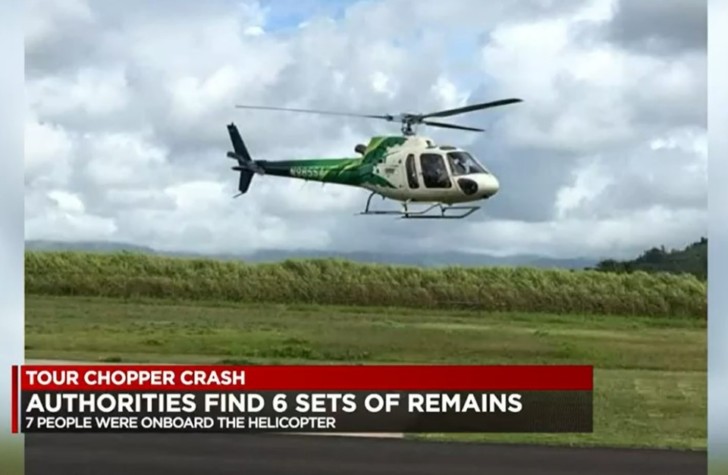
Hawaii has experienced 17 helicopter crashes in the past five years. These crashes were caused by:
- Mechanical failure
- Pilot error
- Weather
Safari Helicopter Crash
Hawaii has helicopter tour operators on four islands and on Kauai, there are at least four tour operators. There have been several sightseeing flight accidents and there was a crash on Thursday and all seven aboard were killed.
The crash on Thursday involved a Eurocopter AS 350B2 helicopter operated by Safari Helicopters of Lihue in Kauai. They, like other helicopter operators, fly tourists to Waimea Canyon and the Na Pali coast. What makes these destinations so popular is the spectacular scenic views of the steep canyons and mountains. These steep canyons and mountains at these sights also make flying dangerous.
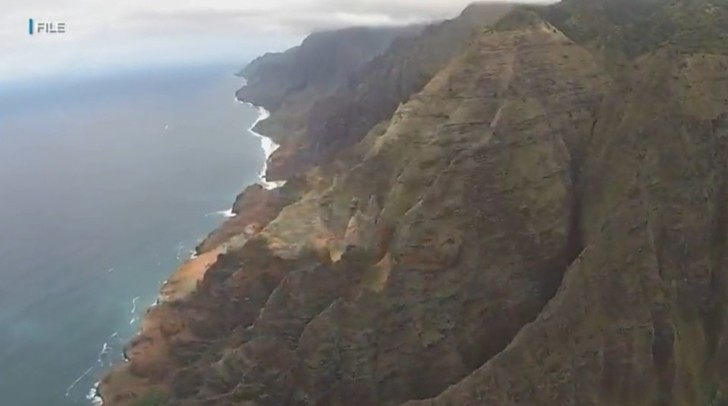
Flight Hazards
Flying in itself has an inherent set of risks. If a vehicle, train or ship has an engine failure, they can wait where they are for assistance. Aircraft that suffer engine failures have to contend with gravity and the reality of diverting to a nearby airport or experiencing a crash landing. This is why aspiring pilots should undergo a series of training to be fully prepared for any eventuality. Those who would like to fly a floatplane should complete a floatplane training program.
These are the most common circumstances that cause aircraft crashes:
MECHANICAL FAILURE:
These mechanical failures can be due to actual part failure or improper maintenance. Aircraft parts are designed for a long and durable life but a lack of maintenance can cut the life span of these parts.
PILOT ERROR:
Just like it sounds, a crash caused by the failure of the Pilot in Command to execute proper flying procedures. A lack of situation awareness can contribute to a pilot not reacting in time or making the wrong decision. The problem with helicopter sightseeing flights is that the pilot usually acts as the tour guide and has to deviate attention from flying to narrate the flight and answer passenger questions.
MOUNTAINS AND CANYONS:
These geological formations not only create an obstacle that needs to be cleared by they also create conditions where you have updrafts on one side of a mountain and downdrafts on the other side. Canyons create a serious risk for pilots that attempt to fly up a canyon. Canyons pinch out at the top and a pilot will crash if they don’t have enough room to turn around or their aircraft can’t climb fast enough to make it over the top.
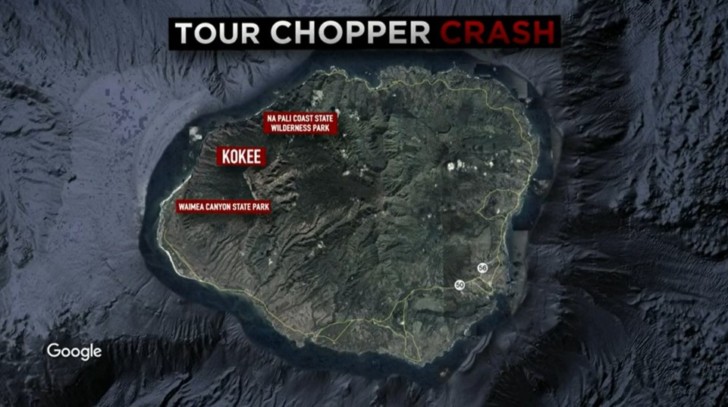
WEATHER:
Bad weather can hit in the tropics and in mountains from out of nowhere. To make matters worse, the crash took place on a tropical island in mountainous terrain. Cloud cover can quickly fill a canyon making it difficult to impossible to see.
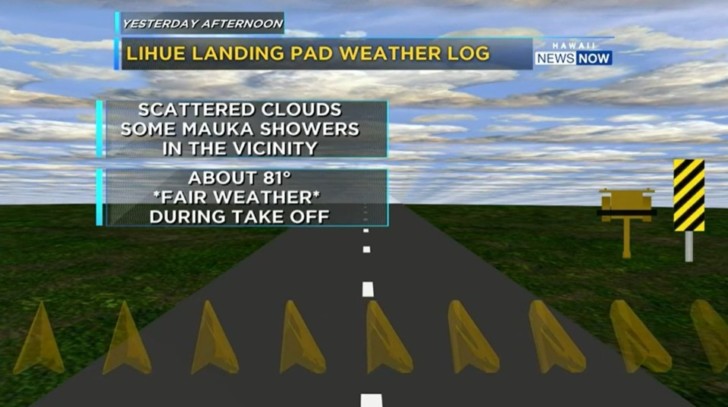
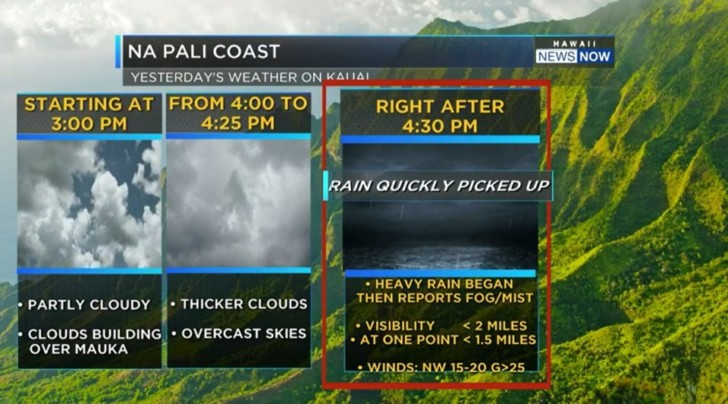
Probable Cause(s)
I am a Major in the Civil Air Patrol (U.S. Air Force Aux.) and I fly search and rescue missions in a Cessna 182. We have to undergo mountain and canyon flying training before we are certified to fly into mountainous terrain. Flying up a canyon is always dangerous as the canyon can pinch out without enough room to turn around or enough climb performance to escape over the top.
Based on the location of the crash, it appears that the helicopter may have impacted a canyon wall and dropped straight down. This crash is under investigation by the NTSB and it will be months before a final report is released.
The likely culprit is the weather. Clouds and high winds were moving into the canyon about the time of the crash. I drove to the top of the canyon and found the conditions as extremely windy. Any rain associated with the incoming weather would have reduced visibility, even more, making it more difficult for the pilot to see and maintain spatial cognition. Also, a lack of situational awareness is likely due to the pilot having to narrate the tour and answer questions. The pilot may have waited too long to turn back before the bad weather set in. Again, this is speculation on my part based on weather conditions and the location and condition of the wreckage. We will have to wait for the official crash report to be completed.
What Happens When a Helicopter Engine Quits
If the engine of a helicopter quits, it is not necessarily a disaster in the making. Helicopters are equipped with an auto-rotation feature that will allow the rotors to spin freely at the correct pitch to control the downward speed. This is assuming that there is no failure in the rotor’s pitch control mechanism and the pilot engages auto-rotation immediately. Helicopter pilots have to demonstrate their ability to perform an auto-rotation before an FAA examiner in order to obtain an FAA helicopter pilot license. This video will show how the auto-rotation works and how to properly execute a non-powered landing.
Rules Governing Sightseeing Helicopter Flights
Federal Aviation Regulations (FARs) are in Title 14 of The Code of Federal Regulations. Commercial flying is governed by:
- Part 121 – scheduled airlines
- Part 135 – charter flights
- Part 91 – this is the part to governs sightseeing flights
When you fly on an airline, it is flying under part 121 and is very stringent in governing operations. One section of part 121 covers maximum age for a pilot flying under part 121 which is 65 years of age. I have read part 91 and I can’t find any maximum age for a pilot flying under part 91. I mention this because the pilot of the Safari helicopter was 69 years old. I am not saying that at age 69, he may have been suffering any kind of medical condition but at age 69 is his cognitive decision making as fast as it was when he was younger. Again, I am just pointing this out as there is a lot of difference between operating a part 121 flight and a part 91 flight.
Final Thoughts
Please don’t take this post as a definitive analysis of the cause of this crash. This will be determined by the NTSB upon the conclusion of their investigation. I wrote this post to illustrate the difference of flying under parts 91 and 121 along with other factors of helicopter flying that can contribute to a bad ending. It’s good to know that if the engine fails on a helicopter, the auto-rotation function can aid in the landing of a powerless helicopter.
